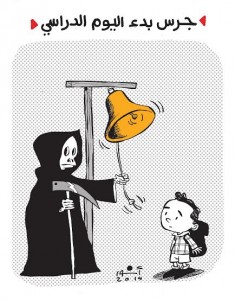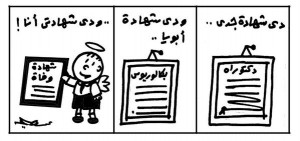
 An article entitled Mana Neyestani reflects in ‘An Iranian Metamorphosis’ from the Columbia Journalism Review describes the life and wardships Mana Neyestani went through as a cartoonist in Iran. In 2006 Neyestani was arrested and imprisoned for a comic he published in an Iranian newspaper. After his sentence, he fled the country to Dubai, Turkey, and China. Neyestani goes into detail how the government suppresses the media from publishing that goes against the state or any particular social group in Iran. From the article, it appears that Neyestani believes that the authoritarian government leaves too much power to the state and not enough to the people. Their use of military forces to keep people in-line with the government is too extreme, especially for torturing people over art. This realists way of enforcing military action on civilians has led to a suppression of the people Iran and should be changed according to Neyestani. It is interesting to see how Neyestani talks about how his government betrayed him in a way and how he felt he needed to flee the country in order to express his own ideology. It was enlightening to read his story and to try to understand his perspective on his own government. Even though he associates being from Iran, Neyestani critiques their government as if he was not necessarily from there. In reading this, it was not surprising that Neyestani would have a change in political perspectives after his imprisonment based on other articles about similar situations that I have read.
An article entitled Mana Neyestani reflects in ‘An Iranian Metamorphosis’ from the Columbia Journalism Review describes the life and wardships Mana Neyestani went through as a cartoonist in Iran. In 2006 Neyestani was arrested and imprisoned for a comic he published in an Iranian newspaper. After his sentence, he fled the country to Dubai, Turkey, and China. Neyestani goes into detail how the government suppresses the media from publishing that goes against the state or any particular social group in Iran. From the article, it appears that Neyestani believes that the authoritarian government leaves too much power to the state and not enough to the people. Their use of military forces to keep people in-line with the government is too extreme, especially for torturing people over art. This realists way of enforcing military action on civilians has led to a suppression of the people Iran and should be changed according to Neyestani. It is interesting to see how Neyestani talks about how his government betrayed him in a way and how he felt he needed to flee the country in order to express his own ideology. It was enlightening to read his story and to try to understand his perspective on his own government. Even though he associates being from Iran, Neyestani critiques their government as if he was not necessarily from there. In reading this, it was not surprising that Neyestani would have a change in political perspectives after his imprisonment based on other articles about similar situations that I have read.
The images above are from the Egyptian newspaper Al-Masry Al-Youm, depicting the mourning of the children you died in a deadly bus crash. The cartoon implies that this deadly crash was not just an accident, but these children died and were persecuted for their religion. This radical approach of altering social structures, is what this cartoon is trying bring awareness to and how even children fall into the hands of the state. The appearance of a dictatorship type of government from the cartoon seems to try to make people aware of how they are being suppressed, like the children meeting their death, and how they need to persuade the government into allowing for all-states and actors to be a part of the government. This would allow hopefully end the persecution of the people and their children. I find it surprising that political cartoons would address children as mean to advocate how the government is persecuting people. Even in this oppression from the government, people are willingly using children as a symbol of this and how they are in opposition of this radical approach, which I would not have thought the cartoonists would use.